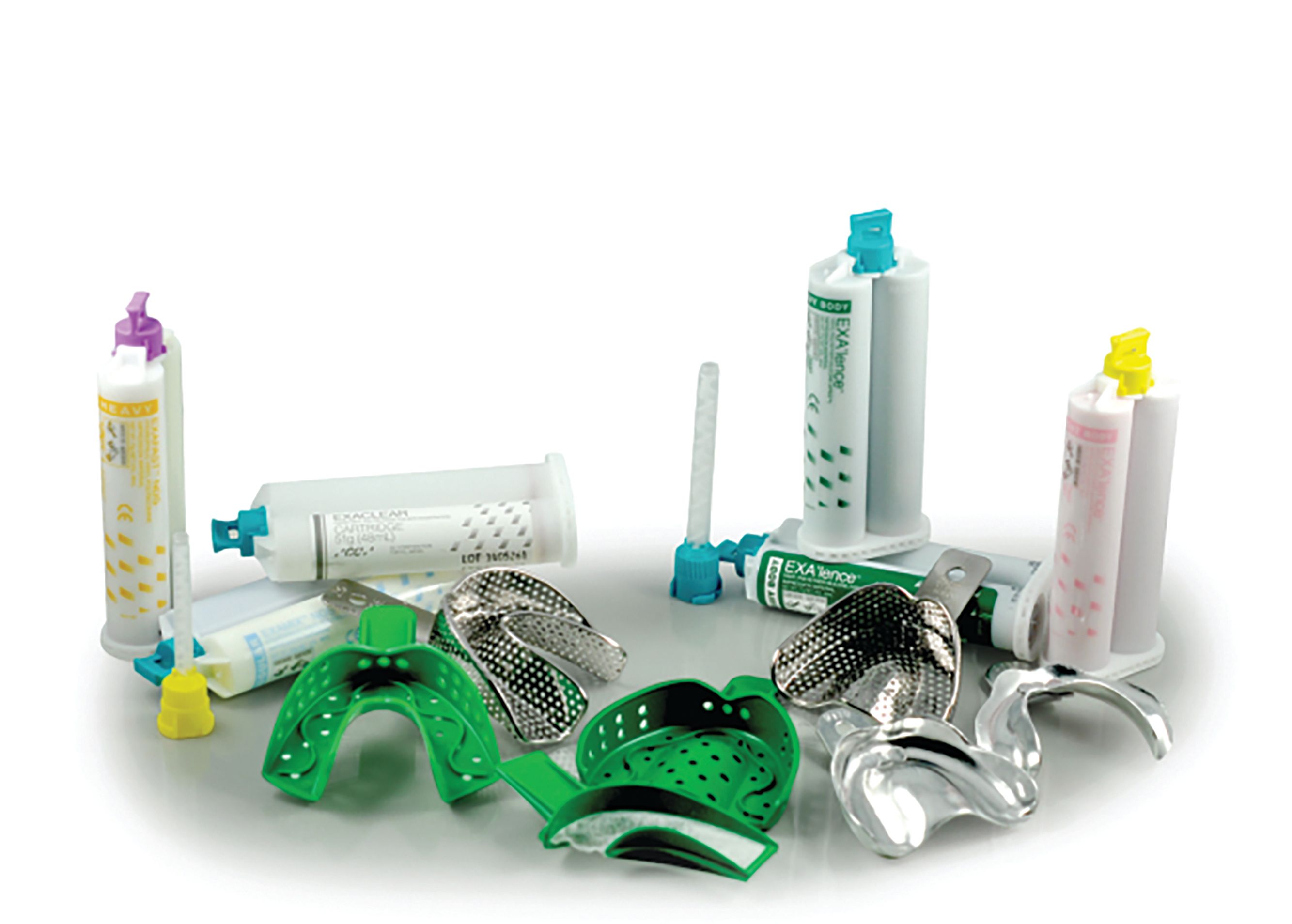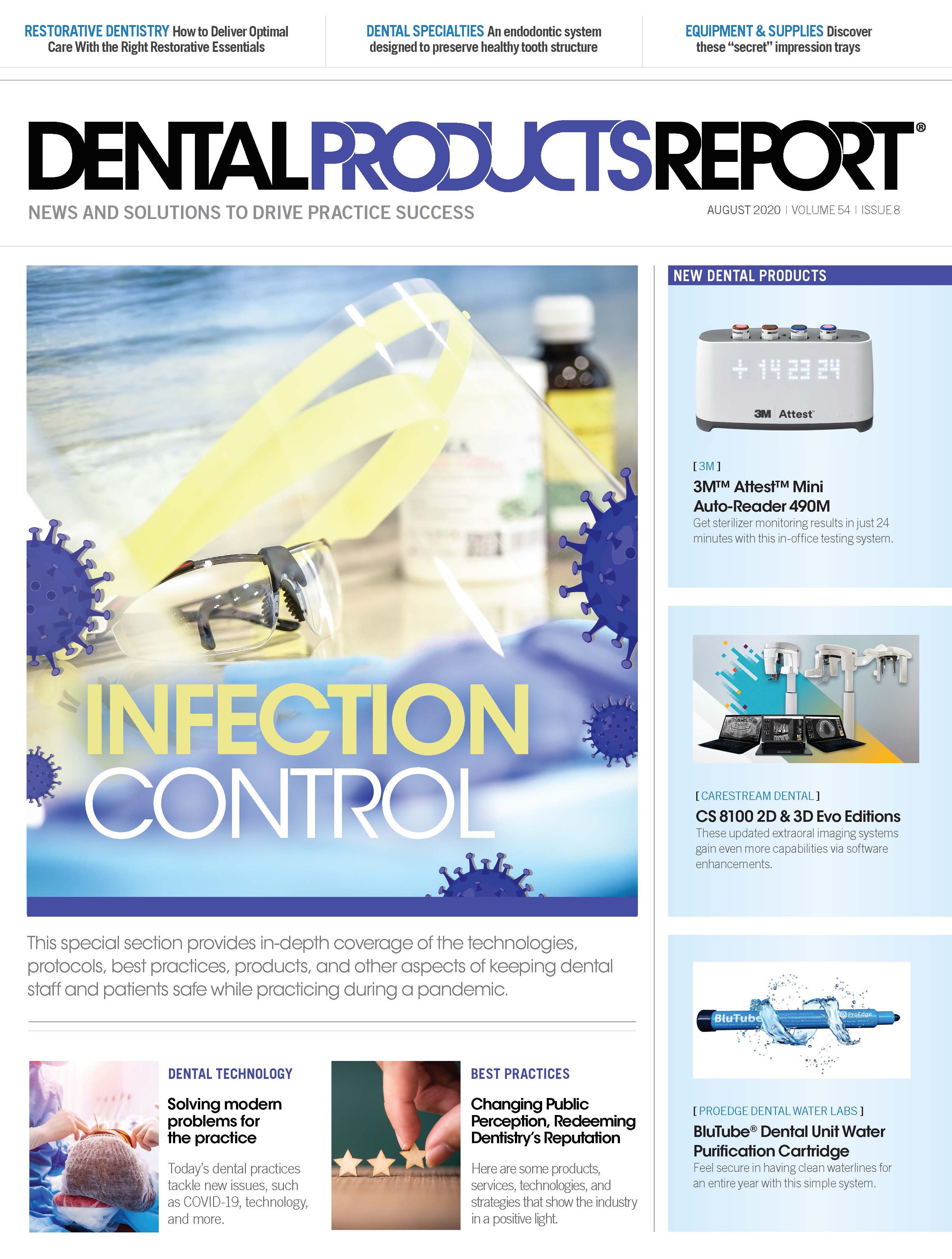How can there be “secret” dental impression trays? I began my quest of discovery when my laboratory lost my favorite COE impression tray. I called GC America, Inc., for a catalog and discovered a treasure trove that had not been part of my dental school kit and that I’d never seen in any convention display or heard any lecturer mention.
These metal denture impression trays originally were made by COE Laboratories. There are two kinds of full and partial denture trays: trays with perforations, for use with alginate impression materials, and solid, nonperforated trays for use with solid impression materials, such as red compound or fast-set impression plaster No. 2.
COE Impression Trays
The COE line of impression trays are available in many shapes, sizes, and types. The metal trays include aluminum, nickel-plated, and stainless steel trays, which are available in perforated and solid for rigidity. The line also features disposable Triple Function Check-Bite trays and disposable Triple Function Sideless trays.
GC America
800-323-7063 | gcamerica.com
The trays are inserted into the mouth, and the facial muscles are manipulated for border molding. The impression is poured up with regular lab plaster. A base plate is fabricated from the resulting model, and this is used for the final denture impression. A well-fitted denture impression tray will lead to a well-fitted base plate and final denture impression.
The catalog shows all the standard trays, plus several pages of trays that were unknown to me. Here are five of them, listed with numbers for better understanding and quick reference:
- No. 1. Depressed Anterior (perforated)
- No. 2. Extra Long (perforated)
- No. 3. McGowan-Winkler perforated immediate (depressed)
- No. 4. McGowan-Winkler complete denture (perforated and solid)
- No. 5. STO-K (perforated and solid)
Sheldon Winkler, DDS, designed a partial denture tray, which allows for a step down in the No. 3 tray for the remaining anterior teeth and the depressed posterior alveolar ridge. This is a 2-level impression No. 3 tray, so the edentulous posterior tray is closer to the ridge and extends deeper on the lingual mylohyoid region. This is brilliant and logical. These trays are the McGowan-Winkler perforated immediate trays for immediate and partial dentures.
The No. 1 Depressed Anterior perforated trays are for immediate and partial dentures, but have a buccal flange that is longer for wider ridge impressions, along with the 2-step depression for residual anterior teeth. The No. 3 McGowan-Winkler perforated immediate denture set of trays consists of upper and lower trays, which have a depression for the remaining anterior teeth to be extracted. The trays have two planes: the first is for the remaining anterior teeth, and the other is a step down for the posterior edentulous resorbed ridge area. These trays allow for an excellent impression of the depressed resorbed posterior ridge and the residual anterior teeth to be extracted.
COE also offers a regular partial denture impression tray in an extra long perforated version (No. 2) for the unique case of a longer-than-usual upper or lower jaw. These trays are not available with the depressed anterior.
The No. 5 STO-K trays are for full denture impressions. They are available as perforated and solid and come in three shapes to match a patient’s jaw: square, tapered, and ovoid. Each shape is available in many sizes, and the entire set, upper and lower, consists of 23 trays.
The STO-K perforated and metal lower full denture trays have a unique and very significant lingual extension into the mylohyoid region, essential for a good impression of the mylohyoid for mandibular denture retention. This impression permits a lingual flange, which is critical for denture retention. They do not have the unique button, or as much anatomical design as the McGowan-Winkler perforated immediate tray.
Such a varied tray selection lets you match the tray as closely to your patient’s anatomy as possible. It is necessary to have a complete set of trays in every size and mold (shape) to properly fit every mouth. These trays will solve a multitude of partial and full denture impression problems, because you can select a tray that best fits your patient.
A good denture starts with a good impression. A good impression starts with a good tray. A partial denture tray cannot serve as a substitute for a full denture tray. The use of some of these lesser known, but highly effective trays can make all the difference in a patient’s success with dentures.


